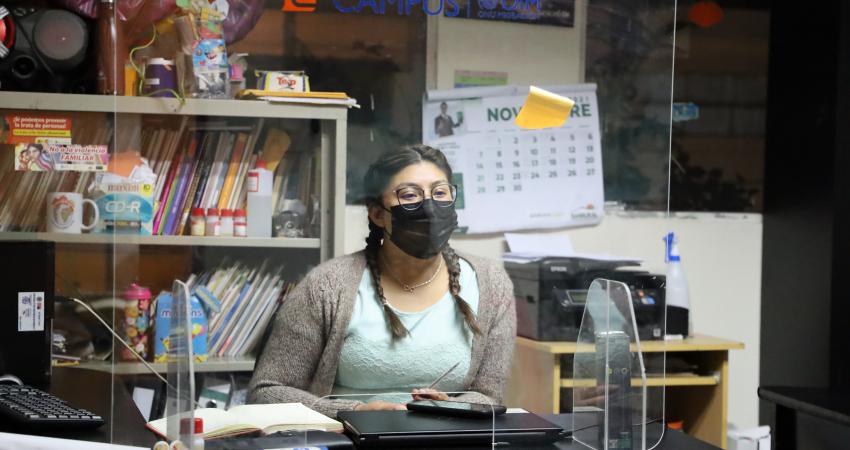Discover the best practices of the Information Hubs on Migration located in Guatemala

In Guatemala, the Hubs are adapted to different community contexts to ensure that the migrant or potential migrant population receives reliable information, guidance on migration procedures and referrals to local services. A team from the International Organization for Migration toured the country, identifying best practices and how they are adapted to each context.
The following are four lessons learned to improve direct attention to migrants:
- Take advantage of spaces with a large flow of migrant population.
In Las Flores, Petén, the Hub is part of the Center for Information, Orientation and Humanitarian Assistance, an inter-institutional space located in a transportation terminal through which many migrants in transit and returnees pass daily. Since its opening in June 2021, more than 1,500 people have been assisted.
- Incorporating migration issues into municipal policies
In the departmental capital of San Marcos, the Municipality took advantage of the work of the Information Hub to create a Migration Affairs Commission, and in 2022 this will become the Municipal Office of Migration Affairs.

3. Offering local opportunities to migrants
In La Esperanza, Quetzaltenango, the Hub is part of the Municipal Women's Office and manages to offer occupational courses and entrepreneurship initiatives to migrants or people with a desire to migrate who are interested in seeking alternatives to irregular migration. This is possible thanks to coordination with the Technical Training Institute (INTECAP).
4. Being flexible and adapting to the needs of the migrant population
In San Mateo, Quetzaltenango, the Hub is part of the Municipal Women's Directorate and develops a variety of community activities for the prevention of irregular migration, especially in educational centers and with women's groups in the communities. However, it also acts as a liaison for foreigners with their embassies and consulates and helps them to complete their regularization procedures.
The Information Hubs on Migration are a regional model that operates in eight countries with the support of the IOM. Learn more here.